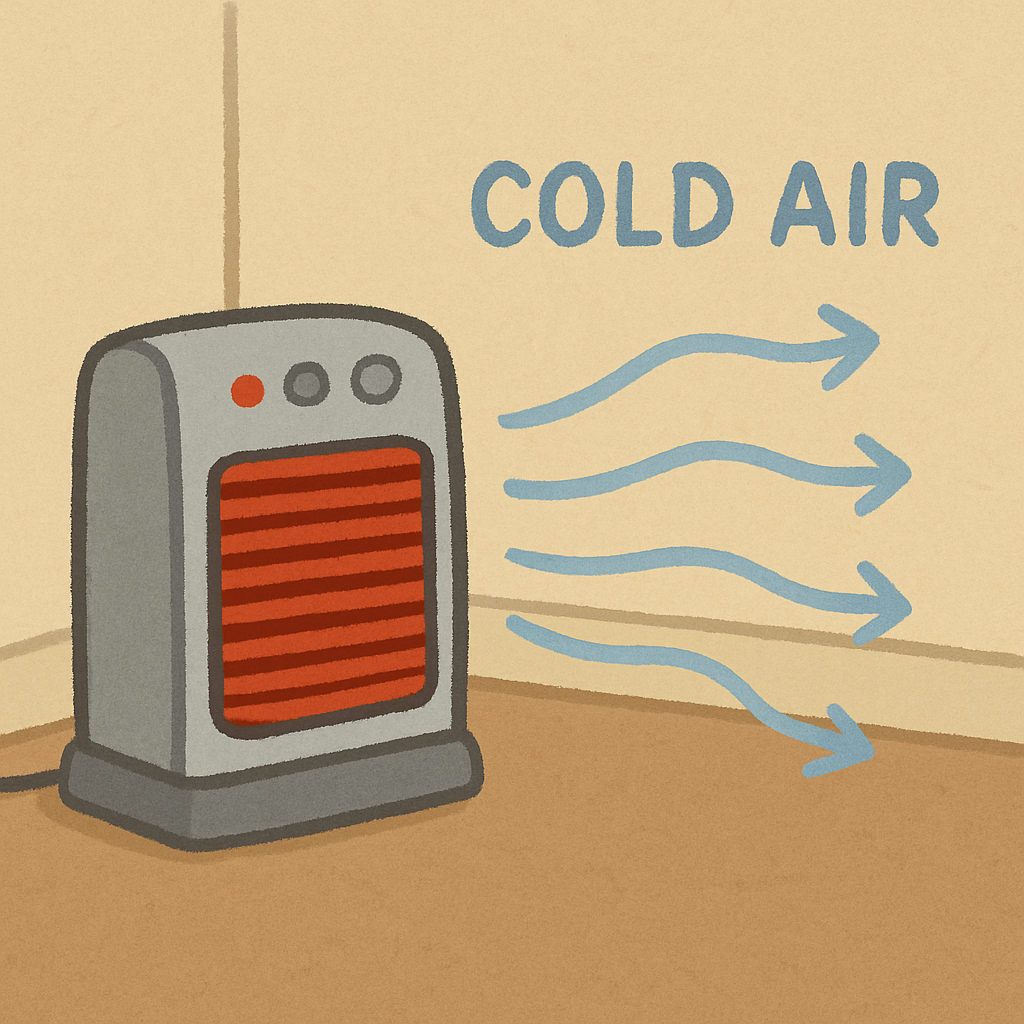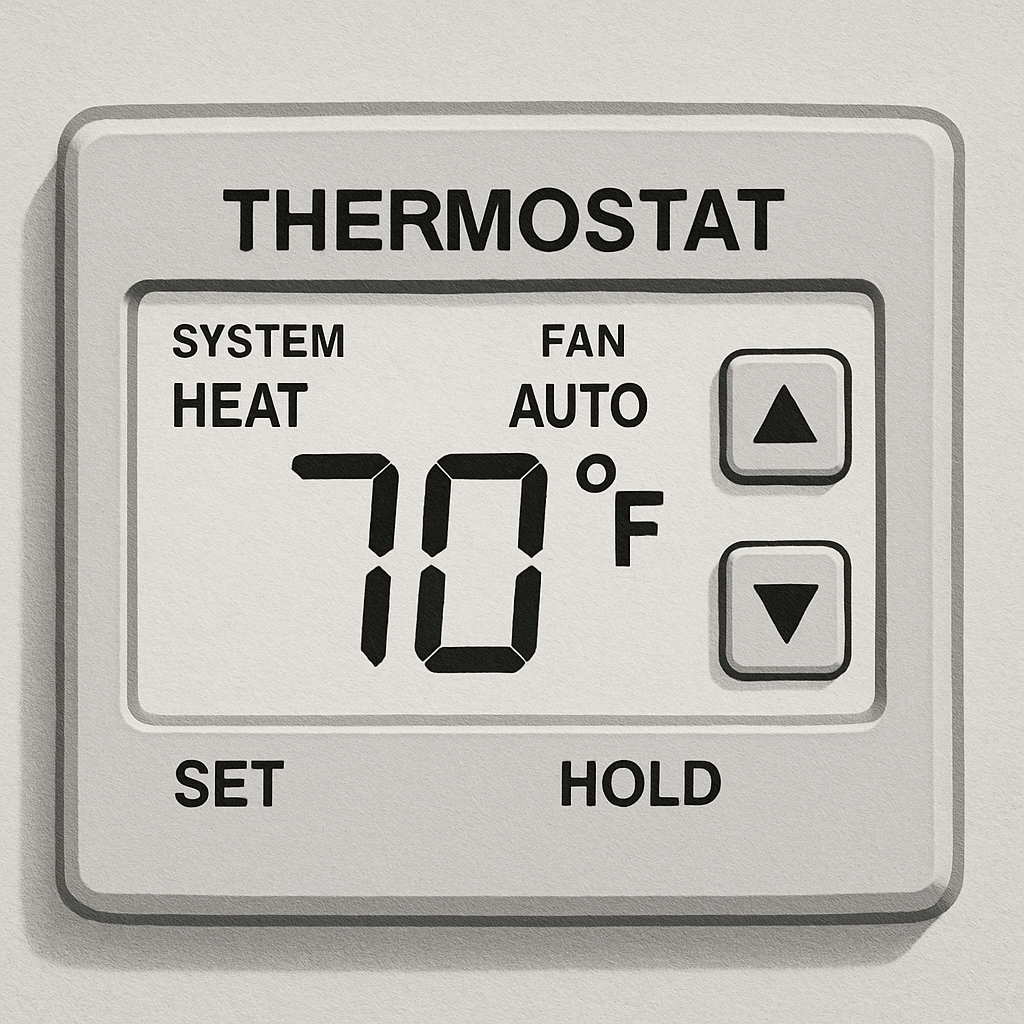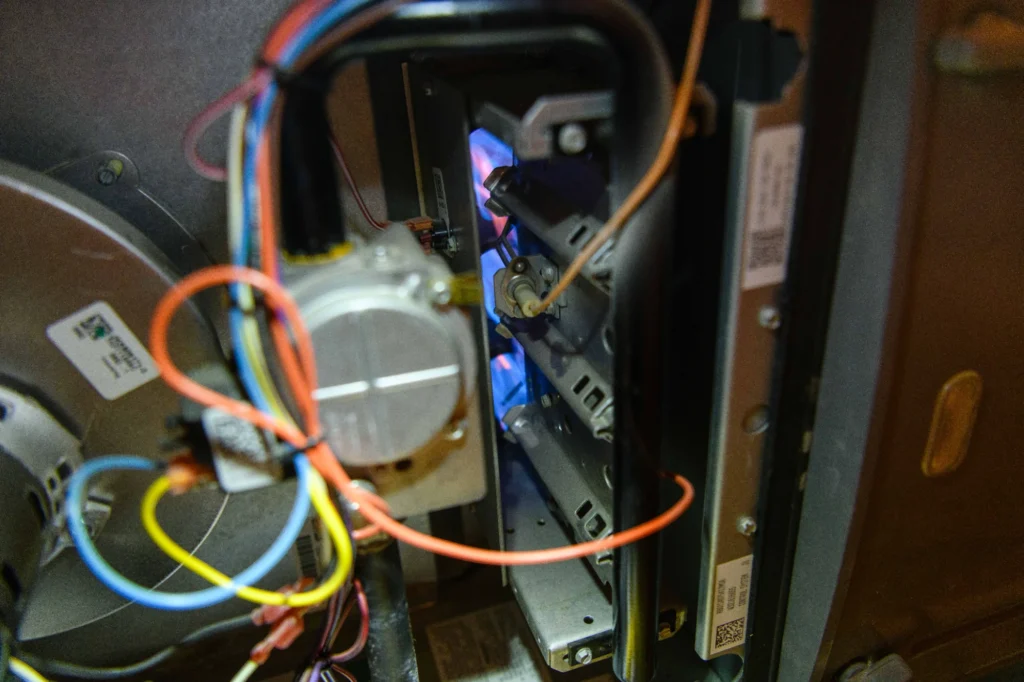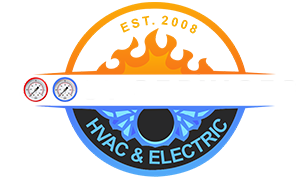As the temperatures drop, having a heater that blows cold air can be frustrating and uncomfortable. Understanding the underlying issues can help you address the problem promptly and restore warmth to your home. At BOOST SERVICES, we prioritize your comfort and are committed to providing reliable and effective heating solutions. Let’s explore why your heater might be blowing cold air and how to resolve it.
When the chill of winter sets in, the last thing you need is a heater that fails to provide the warmth you expect. A malfunctioning heater not only affects your comfort but can also lead to increased energy bills as your system works harder without achieving the desired results. By identifying the root cause of the issue, you can take steps to ensure your heater functions efficiently, keeping your home cozy and your energy costs in check.
Understanding the intricacies of your heating system can be daunting, but it’s crucial for maintaining a comfortable living environment. Even minor issues can escalate if not addressed promptly, leading to more significant problems that require extensive repairs. With BOOST SERVICES by your side, you can rest assured that our expertise will guide you through diagnosing and fixing any heating issues you encounter.

Table of Contents
Common Reasons for Your Heater Blowing Cold Air
When your heater starts blowing cold air, it’s essential to investigate the potential causes. Many factors can contribute to this issue, ranging from simple fixes to more complex problems that require professional assistance. By understanding these common reasons, you can take proactive steps to ensure your heating system operates effectively throughout the winter months.
Incorrect Thermostat Settings
One of the first things to check when your heater is blowing cold air is the thermostat settings. Ensure it’s set to “heat” and the fan is set to “auto” rather than “on.” When set to “on,” the fan will run continuously, circulating air even when it’s not being heated. This can make it seem like your heater is blowing cold air.
It’s easy to overlook the thermostat settings, especially if multiple people in the household adjust them. Double-check that the temperature setting is appropriate for the current weather conditions. Sometimes, a simple adjustment can make all the difference in restoring warmth to your home. Additionally, consider upgrading to a programmable thermostat for more precise control over your heating system.
Thermostat malfunctions can also contribute to issues with your heater. If the thermostat is not accurately reading the room temperature, it may fail to signal the heater to turn on. In such cases, replacing the batteries or recalibrating the thermostat might solve the problem. For persistent issues, consulting a professional can ensure that your thermostat functions correctly.
Pilot Light Issues in Gas Furnaces
If you have a gas furnace, the pilot light might be out, preventing the burner from igniting. This is a common reason for a furnace blowing cold air. Relighting the pilot light could be a simple fix. However, if it keeps going out, it may indicate a problem with the thermocouple or a gas supply issue, which requires professional attention.
The pilot light plays a crucial role in igniting the gas needed for heating. If it keeps going out, it can be frustrating and inconvenient. A faulty thermocouple, which is responsible for detecting the pilot light’s presence, could be the culprit. This component might need cleaning or replacement if it’s not functioning correctly.
Gas supply issues can also affect the pilot light. Ensure that your gas valve is open and that there are no obstructions in the gas line. If you suspect a more significant issue, such as a gas leak, it’s vital to contact a professional immediately. Safety should always be your top priority when dealing with gas appliances.
Faulty Ignition System
Modern furnaces use electronic ignition systems. If the ignition system fails, the furnace won’t light, resulting in cold air being blown. This could be due to a malfunctioning igniter or a problem with the control board. It’s crucial to have a professional HVAC technician inspect and repair the system to ensure safety and functionality.
Electronic ignition systems are more efficient than traditional pilot lights, but they can still encounter issues. A faulty igniter may prevent the furnace from starting, leading to cold air being circulated. Replacing the igniter is a task best left to professionals, as it involves working with electrical components.
The control board, which manages the furnace’s operations, can also malfunction. If it fails to send the correct signals to the igniter, the furnace won’t operate as intended. Diagnosing and repairing control board issues require specialized knowledge and tools, making professional assistance necessary for a safe and effective solution.
More Reasons Why Your Heater Is Blowing Cold Air
Beyond the basic issues, several other factors can lead to your heater blowing cold air. Understanding these additional reasons can help you pinpoint the problem and take appropriate action to restore your heating system’s performance. These issues may require a combination of DIY troubleshooting and professional expertise to resolve effectively.

Insufficient Gas Supply
For homes with a gas furnace, an insufficient gas supply can prevent the furnace from heating the air. This could be due to a closed gas valve or an issue with the gas line. Check to make sure the gas valve is open, and if the problem persists, contact a professional for further assessment.
An insufficient gas supply can be more than just a minor inconvenience; it can be a serious safety hazard. If you notice a weak flame or difficulty keeping the pilot light lit, it might indicate a problem with the gas flow. Ensure that all gas valves are fully open and that there’s no blockage in the line.
Sometimes, gas supply issues can stem from external factors, such as a disruption in service from your gas provider. If you suspect this is the case, contacting your gas company can clarify whether there’s an issue on their end. Always prioritize safety and avoid attempting any repairs that involve handling gas lines yourself.
Clogged Air Filters
A clogged air filter can restrict airflow, causing the heat exchanger to overheat and shut down as a safety measure. This will result in the blower circulating cool air. Regularly replacing air filters can prevent this issue and improve your system’s efficiency.
Air filters play a vital role in maintaining the efficiency of your heating system. Over time, they can become clogged with dust and debris, leading to restricted airflow. When airflow is compromised, the heat exchanger may overheat, triggering a safety shutdown.
To avoid this, it’s essential to check and replace air filters regularly, especially during peak usage seasons. A clean filter not only helps your heater function efficiently but also improves indoor air quality. Establishing a routine for checking and replacing filters can prolong your system’s lifespan and enhance its performance.
Ductwork Problems
Leaky or poorly insulated ductwork can cause the heated air to escape, resulting in cold air being blown into your home. Inspecting and sealing ducts can prevent heat loss and improve the effectiveness of your heating system.
Ductwork is a critical component of your heating system, responsible for distributing warm air throughout your home. If there are leaks or poor insulation, a significant amount of heated air can be lost, leading to inefficiencies and cold spots in your home.
Regularly inspecting your ductwork for signs of wear and tear can help you identify potential issues before they escalate. Sealing leaks with duct tape or mastic sealant can prevent heat loss and ensure that warm air reaches its intended destination. For extensive ductwork repairs or insulation improvements, consulting a professional can provide a more comprehensive solution.
Electric Furnaces: Additional Considerations
Electric furnaces have their own set of considerations when it comes to troubleshooting cold air issues. Understanding the unique components and potential problems associated with electric heating systems can help you address any issues that arise, ensuring reliable and efficient performance throughout the winter.
Tripped Circuit Breaker
Electric furnaces rely on electricity to heat elements that warm the air. If a circuit breaker trips, it can cut power to the heating elements, causing the furnace to blow cold air. Check your electrical panel and reset any tripped breakers. If the issue continues, it may indicate a more significant electrical problem.
Circuit breakers are designed to protect your home’s electrical system from overloads and short circuits. If a breaker trips, it cuts power to the affected circuit, which can include your furnace. Resetting the breaker might restore functionality, but if it continues to trip, there may be an underlying issue that needs addressing.
Repeated tripping can indicate problems such as an overloaded circuit, faulty wiring, or a malfunctioning component within the furnace. Identifying the root cause of the electrical issue is crucial for ensuring safe and reliable operation. Consulting an electrician or HVAC professional can provide a thorough assessment and necessary repairs.
Malfunctioning Heating Elements
In an electric furnace, heating elements can fail over time. If one or more elements stop working, the furnace won’t be able to heat the air effectively. This requires professional diagnosis and replacement of the faulty elements.
Heating elements in an electric furnace are responsible for generating the heat needed to warm the air. Over time, these elements can degrade or fail, reducing the furnace’s ability to produce heat. If you notice a decrease in heating performance, faulty elements could be the cause.
Replacing heating elements is a complex task that involves working with electrical components and should be performed by a qualified technician. Professional diagnosis can confirm which elements are malfunctioning and ensure that replacements are installed correctly, restoring your furnace’s heating capacity.
Why Professional HVAC Services Matter
At BOOST SERVICES, we understand the importance of a warm and comfortable home. Our team of experts is dedicated to diagnosing and resolving any heating issues you may face. With our tailored solutions and commitment to excellence, you can trust us to get your heating system back on track quickly and efficiently.
Professional HVAC services are invaluable for maintaining the safety and efficiency of your heating system. Attempting to fix complex issues on your own can lead to further damage and safety risks. By relying on experienced technicians, you can ensure that all repairs and maintenance are performed to the highest standards.
Why Choose BOOST SERVICES?
- Expertise and Experience: Our team is skilled in handling both residential and commercial heating systems, ensuring reliable service every time. We stay updated with the latest industry advancements to provide cutting-edge solutions to our clients.
- Community-Oriented Approach: We prioritize building trust-based relationships within the Pasadena community, providing dependable and high-quality service. Our commitment to customer satisfaction and community engagement sets us apart as a trusted local provider.
- Prompt and Professional Service: We know time is of the essence, especially when dealing with heating issues. Our team is ready to respond quickly to your needs, ensuring timely solutions that minimize discomfort and inconvenience.
Contact BOOST SERVICES Today
If your heater is blowing cold air, don’t wait to get it fixed. Contact BOOST SERVICES for professional HVAC solutions tailored to your needs. Our warm and compassionate approach ensures your comfort is our top priority. Call us now at:
- 818-277-5056
- 747-264-6358
Let us help you restore warmth and comfort to your home with our expert heating solutions. Our dedicated team is here to provide the reliable service and expertise you need to keep your home cozy and inviting throughout the winter season.

FAQ — Heater Blowing Cold Air
Why is my heater blowing cold air instead of warming the house?
Common causes include incorrect thermostat settings, the fan set to “On,” a dirty air filter causing overheating and safety shutdowns, ignition or pilot issues, heat pump defrost mode, or duct problems that dilute warm air with unconditioned air.
Could my thermostat settings make the heater blow cold?
Yes. Make sure the thermostat is on Heat, the fan is set to Auto (not On), and the setpoint is a few degrees above room temperature. Replace batteries and confirm schedules if the display is dim or unresponsive.
What does the fan setting “On” vs “Auto” change?
On runs the blower continuously, so you may feel room-temperature air between heat cycles. Auto runs the blower only when the furnace or heat pump is actively heating, reducing the chance of cool-feeling airflow.
How can a dirty filter cause cold air from vents?
A clogged filter restricts airflow, the furnace overheats, and the high-limit switch shuts burners off while the blower keeps running—pushing cool air. Replace filters every 30–60 days during heavy use.
My furnace starts warm then turns cool—what’s happening?
This usually indicates short cycling from overheating (dirty filter, blocked returns, closed vents), a weak flame sensor/igniter, or a failing limit switch. Address airflow first; if symptoms persist, call a technician.
Can pilot light or ignition problems make air feel cold?
Yes. If the pilot is out (older furnaces) or the electronic igniter fails, burners won’t fire and the blower may still run. Relight the pilot per the manual or schedule service for igniter or sensor issues.
Why does my heat pump blow cool air sometimes?
During defrost mode, outdoor coils are warmed and indoor air may feel cooler briefly. Also, heat pumps deliver gentler supply temperatures than gas furnaces. If air is consistently cold, check filters and schedules; call a pro if performance remains weak.
Could ductwork issues cause cold air at some vents?
Yes. Leaky, disconnected, or uninsulated ducts (especially in attics/crawl spaces) can pull in cold air or lose heat before it reaches rooms, leading to cool or uneven airflow.
What quick checks can I do before calling a technician?
Try the following:
- Set thermostat to Heat, Fan Auto; raise setpoint 3–5°F
- Replace the air filter and open all supply/return vents
- Verify the furnace/air handler switch and breaker are On (reset once only)
- Ensure the outdoor heat pump unit is clear of debris and snow
- Note any error codes or flashing lights on the furnace panel
Why is the air cold right after the system starts?
Most systems run a short “blower on” delay, so you’ll feel room-temperature air for the first minute. If cool air continues beyond a few minutes, investigate filter, ignition, or heat pump issues.
Can a condensate or float safety switch cause cool air?
Yes. If a safety switch opens due to a clogged drain, burners or strips can be disabled while the blower runs to protect the unit, resulting in cool airflow. Clearing the drain restores operation.
What if my breaker keeps tripping when heat runs?
Repeated trips indicate electrical faults, seized motors, or short circuits. Do not keep resetting. Schedule professional diagnosis to prevent damage and safety hazards.
When is cold air an emergency warning sign?
Shut the system off and call immediately if you smell burning or gas, see smoke, hear loud banging, or a carbon monoxide alarm sounds. Treat CO alarms as emergencies and ventilate/evacuate as directed.
How do I prevent “heater blowing cold air” problems?
Replace filters on schedule, keep vents open and returns clear, maintain 24″ clearance around equipment, clean outdoor heat pump coils, and schedule annual professional tune-ups to check ignition, sensors, safeties, and airflow.
Should I repair or replace if cold-air issues keep returning?
Consider age, frequency of faults, and repair cost. Recurrent ignition failures, heat exchanger concerns, or major motor/control issues on older units may justify replacement for reliability, comfort, and efficiency.

